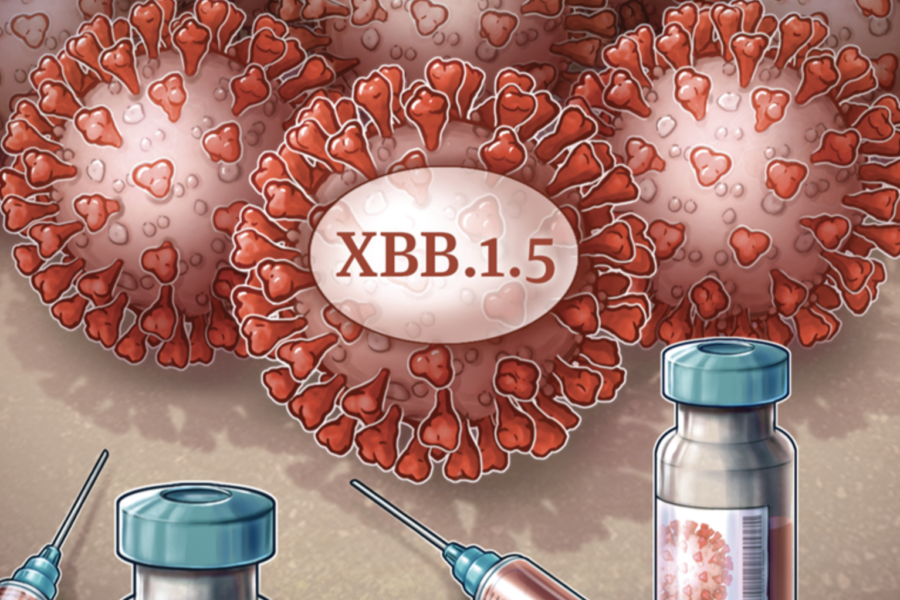On June 15, members of the US Food and Drug Administration’s (FDA) Vaccine and Related Biological Products Advisory Committee (VRBPAC) voted unanimously to recommend updating the COVID-19 vaccine composition to a monovalent XBB lineage.
On June 16, the FDA announced that it had advised manufacturers planning to update their COVID-19 vaccines that they should specifically target XBB.1.5. Scientists from Moderna, Novavax, and Pfizer had told the FDA and its advisory committee that their XBB.1.5 monovalent vaccines could be ready to inject into arms by late July or early fall.
Although the FDA decides what antigens the COVID-19 vaccines should include, the US Centers for Disease Control and Prevention (CDC) is responsible for deciding who should get them and when. As soon as the FDA greenlights an XBB.1.5 vaccine, “I’m sure the ACIP will have a specially called meeting” to decide how it should be used, William Schaffner, MD, chair of the department of preventive medicine at the Vanderbilt University School of Medicine, said in an interview.
ACIP stands for the CDC’s Advisory Committee on Immunization Practices, on which Schaffner serves as the liaison representing the National Foundation for Infectious Diseases, where he is medical director. At the ACIP meeting on an XBB.1.5 vaccine, “I think there will be a rather elaborate discussion on who will receive this vaccine,” Schaffner predicted.
The Whats of an XBB.1.5 Vaccine
Current bivalent COVID-19 vaccines take aim at the ancestral SARS-CoV-2 strain, first identified in December 2019 and targeted by the original monovalent vaccines, and the BA.4 and BA.5 Omicron subvariants, whose spike proteins are identical.
Even before the bivalent vaccines became available last September, though, the ancestral SARS-CoV-2 strain had disappeared, edged out by a Greek alphabet of variants leading up to Omicron and its offspring.
“The virus has continued to evolve…really since the beginning of the pandemic,” CDC scientist Natalie Thornburg, PhD, noted at the VRBPAC meeting.
However, given that the original monovalent vaccines still protected against severe illness and death and that the virus’ trajectory was unpredictable, the VRBPAC and the FDA in June 2022 concluded that it would be wise to keep targeting the ancestral strain as well as the newer Omicron subvariants in a bivalent vaccine.
But less than a year after the bivalent vaccine debuted, BA.4 and BA.5 also dropped out of circulation among humans, and chances are those subvariants are never coming back, Kanta Subbarao, MD, MPH, director of the World Health Organization’s (WHO) Collaborating Centre for Reference and Research on Influenza in Melbourne, Australia, told the advisory committee members.
Meanwhile, she said, research has shown that among people who received 3 doses of the original monovalent vaccine against ancestral SARS-CoV-2, only those who also received the bivalent vaccine or became infected with the Omicron variant produced protective antibodies against XBB subvariants. Even so, the levels of protective antibodies induced by the bivalent vaccine were lower against XBB subvariants than against other Omicron subvariants, she noted.
The T-cell response also factors in, though. It’s thought to be responsible for longer-lasting protection against serious illness and death from COVID-19. “We all acknowledge that neutralizing antibody is a very important correlate of protection, but it doesn’t tell the whole story,” Subbarao noted at the VRBPAC meeting.
However, FDA scientist Jerry Weir, PhD, told committee members, higher levels of neutralizing antibodies correlated with higher levels of protection with all spike-based COVID-19 vaccines.
“This is still the strongest marker that we have that is useful for evaluating vaccine selection,” he said. “I would love to be standing here next year telling you we have more information about T-cell responses and what correlates with protection.”
But, he reminded the group, studying the T-cell response is more challenging than studying the antibody response generated by the vaccines.
Preclinical data for XBB monovalent vaccines developed by Moderna, Novavax, and Pfizer suggest that including the ancestral SARS-CoV-2 is unlikely to enhance the immune response to currently circulating subvariants, Weir said.
Because the ancestral virus and antigenically closely related variants no longer circulate in humans, the WHO’s Technical Advisory Group on COVID-19 Vaccine Composition, which Subbarao chairs, in May recommended moving away from including the original SARS-CoV-2 in vaccine formulations. Instead, the group advised that new COVID-19 vaccines should induce neutralizing antibodies against XBB subvariants.
Back in March and the first half of April, XBB.1.5 represented more than 80% of circulating SARS-CoV-2 in the US, according to CDC estimates. Its dominance began to slip in late April, and as of late June, XBB.1.5 represented little more than a quarter of circulating SARS-CoV-2 variants. By then, though, XBB.1.5 and 9 other XBB subvariants together accounted for a total of 96% of circulating SARS-CoV-2 in the US. Fortunately, members of the XBB family of subvariants are antigenically similar to each other, so a vaccine against XBB.1.5 should protect against the rest of them as well, the WHO committee noted.
Eliminating ancestral SARS-CoV-2 from COVID-19 vaccines increases the concentration of antigens for the new subvariants, possibly raising the magnitude of the humoral response, which leads to antibody production, the WHO committee pointed out.
Another benefit of moving on from the bivalent vaccine: repeated exposure to the ancestral SARS-CoV-2 spike through vaccination may reduce immune responses to new target antigens, an effect called immune imprinting. While there is in vitro evidence of immune imprinting, its clinical impact remains unclear, Subbarao told the FDA advisory committee members.
